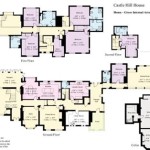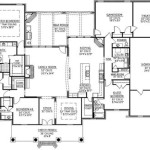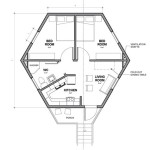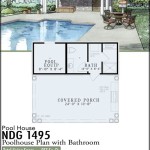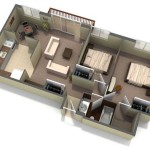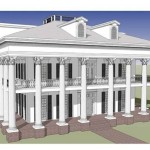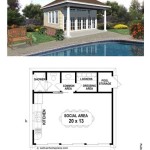Traditional House Plans With Elevators: Blending Timeless Design and Modern Accessibility
The concept of traditional house plans often evokes images of grand staircases, sprawling layouts, and architectural details reminiscent of bygone eras. These designs, steeped in history and elegance, continue to appeal to homeowners seeking a sense of permanence and established style. However, the evolving needs of modern families, particularly those planning for aging in place or accommodating individuals with mobility limitations, are driving adaptations in traditional house plans. Integrating an elevator into a traditional home design presents a unique challenge: maintaining the aesthetic integrity of the original architecture while seamlessly incorporating a feature that addresses present and future accessibility requirements.
Traditionally, elevators were largely absent from residential architecture, reserved for commercial buildings and luxury apartments. Their inclusion in a private residence often involved significant structural alterations and aesthetic compromises. Modern advancements in elevator technology and design have, however, facilitated the easier integration of elevators into various house styles, including traditional ones. Compact elevator models, customizable finishes, and enhanced safety features are making elevators a more viable and desirable option for homeowners seeking enhanced comfort and long-term usability of their properties.
Selecting a traditional house plan that incorporates an elevator requires careful consideration of several factors. The architectural style of the house, the available space, the desired level of accessibility, and the budgetary constraints are all crucial elements that must be addressed during the planning phase. Collaboration between architects, interior designers, and elevator specialists is essential to ensure a cohesive and functional design that meets the homeowner's needs while respecting the traditional character of the house.
Planning Considerations for Elevator Integration
The success of integrating an elevator into a traditional house plan hinges on meticulous planning and a thorough understanding of the existing structure and its limitations. Certain aspects of traditional architecture, such as load-bearing walls, intricate trim work, and limited floor space, can pose challenges to elevator installation. A qualified architect experienced in both traditional design and accessibility modifications is vital to navigate these complexities.
One of the initial steps is determining the optimal location for the elevator shaft. Ideally, the elevator should be situated in a location that provides convenient access to all levels of the house with minimal disruption to the existing floor plan. Common areas for elevator placement include near the main staircase, within a central hallway, or adjacent to a laundry room or pantry. The chosen location should also consider the structural integrity of the building and the ease of running electrical and mechanical systems to the elevator.
Furthermore, the dimensions of the elevator shaft must be carefully calculated to accommodate the desired cab size and mechanical components. Building codes and regulations regarding elevator safety and accessibility must also be strictly adhered to. This often necessitates adjustments to the initial house plan to ensure compliance and prevent potential issues during the construction process. Early consultation with local building officials can proactively address such concerns.
Beyond the structural considerations, the aesthetic integration of the elevator into the traditional design is equally important. The elevator cab and shaft should be designed to complement the existing architectural style, incorporating materials, colors, and finishes that seamlessly blend with the rest of the house. This can involve using wood paneling, custom moldings, and elegant lighting fixtures to create a cohesive and harmonious look.
Choosing the Right Elevator Type
The market offers a variety of residential elevator types, each with its own set of advantages and disadvantages. Selecting the appropriate elevator for a traditional house plan requires careful consideration of factors such as space availability, budget, and the specific accessibility needs of the occupants. From traction elevators relying on cables and counterweights to hydraulic elevators using fluid pressure, the choice depends on factors such as travel distance, weight capacity, and energy efficiency.
Traction elevators are generally best suited for multi-story homes with longer travel distances. They offer a smooth and quiet ride and are known for their energy efficiency. However, they require more headroom space for the machinery and may necessitate a larger shaft size, which can be a constraint in traditional homes with limited space. On the other hand, hydraulic elevators are more compact and require less headroom, making them a viable option for existing homes with lower ceilings. They are generally more affordable than traction elevators in terms of initial cost, but they may consume more energy and require more frequent maintenance.
Pneumatic elevators, also known as vacuum elevators, are another option gaining popularity in residential settings. These elevators use air pressure to move the cab up and down a vertical tube, eliminating the need for cables, ropes, or pistons. They are relatively easy to install and require minimal space, making them suitable for retrofit projects. However, their weight capacity is limited, and they may not be suitable for all users.
Regardless of the elevator type chosen, it is crucial to select a reputable elevator manufacturer and installer with experience in residential projects. A professional installation is essential to ensure the safe and reliable operation of the elevator and to comply with all applicable building codes and regulations. Regular maintenance and inspections are also necessary to keep the elevator in optimal condition and prevent potential problems.
Maintaining Traditional Aesthetics with Modern Functionality
The key to successfully integrating an elevator into a traditional house plan is to strike a balance between modern functionality and the preservation of the home's original character. This requires careful attention to detail and a commitment to using materials, finishes, and design elements that complement the existing architectural style. The goal is to create an elevator that not only provides accessibility but also enhances the overall aesthetic appeal of the house.
One effective strategy is to conceal the elevator shaft as much as possible within the existing structure. This can involve integrating the shaft into a closet, pantry, or other utilitarian space. Alternatively, the shaft can be disguised as a decorative element, such as a faux chimney or a built-in bookcase. Careful attention should be paid to the exterior appearance of the shaft as well, ensuring that it blends seamlessly with the rest of the house.
Inside the elevator cab, the design possibilities are virtually endless. The cab can be customized to match the style of the house, using wood paneling, custom moldings, and elegant lighting fixtures. Antique hardware and period-appropriate finishes can further enhance the traditional aesthetic. Mirrors can be used to create the illusion of more space, and comfortable seating can be added for convenience. The elevator's control panel should also be discreetly integrated into the design, minimizing its visual impact.
Beyond the elevator itself, accessibility considerations should be integrated throughout the house. This can involve widening doorways, installing grab bars in bathrooms, and providing adequate lighting in hallways and stairwells. Creating a barrier-free environment throughout the house will not only enhance the comfort and convenience of the occupants but also increase the long-term value of the property.
Incorporating an elevator into a traditional house plan requires careful planning, collaboration, and a commitment to preserving the home's original character. By working with experienced architects, interior designers, and elevator specialists, homeowners can create a space that seamlessly blends modern functionality with timeless elegance, ensuring that their home remains accessible and enjoyable for years to come. The value of such planning becomes increasingly clear as homeowners age or experience changes in mobility, solidifying the home's suitability for all stages of life.

House Plans With Residential Elevator Drummond

House Plans With Residential Elevator Drummond

Castle Home Plan With Elevator 44109td Architectural Designs House Plans

Elevator Equipped House Plans Sater Design Collection

2 Story 3 Bedroom Country Home With Elevator And Loft House Plan

House Plans With Residential Elevator Drummond

Castle Home Plan With Elevator 44109td Architectural Designs House Plans

27 House Plans With Elevator Ideas In 2024 Dream Floor

Exclusive Multi Generational Home Plan With Elevator And Ample Storage 61361ut Architectural Designs House Plans

Elevator Equipped House Plans Sater Design Collection
Related Posts

